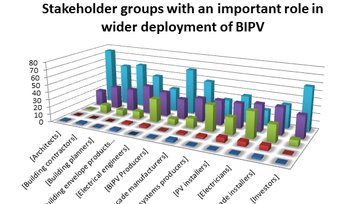
About Dem4BIPV
BIPV has often proved to be the optimal method of installing renewable energy systems in urban, built-up areas where undeveloped land is both scarce and expensive. It is generally expected that in the next century, photovoltaics will be able to contribute substantially to the mainstream power production, and that through their widespread commercialization, BIPV systems will become the backbone of the zero energy building (ZEB) European target for 2020.
The Dem4BIPV project teams up with leading universities in Europe to train the BIPV professionals of the future.
BIPV
Building-integrated photovoltaics (BIPV) are photovoltaic elements that are used to replace conventional building materials in parts of the building envelope (roof, or facades). They are increasingly being incorporated into the construction of new buildings as a principal or ancillary source of electrical power, rather than added on later, although existing buildings may be retrofitted with similar technology. The advantage of integrated PVs over more common non-integrated systems is that the initial cost can be offset by reducing the amount spent on building materials and labour that would normally be used to construct the part of the building that the BIPV modules replace. These advantages make BIPV one of the fastest growing segments of the photovoltaic industry forecasted to add 4.6 GW of new capacity by 2017 globally (Pike Research, August 2012).







